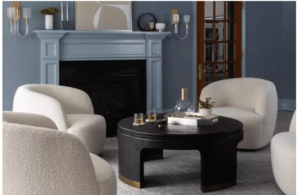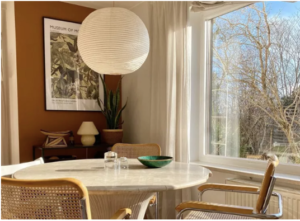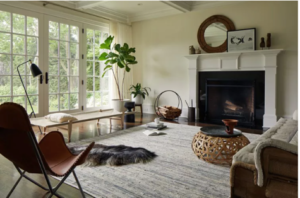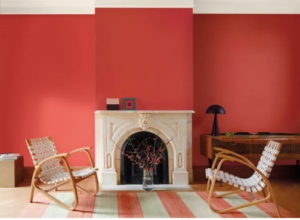You have probably entered a space where you had the feeling that everything was connected and coordinated, that everything was just right. You can also achieve this effect in your home by using the basic principles of interior design. Put them into practice and with a little experimentation you are already on your way to creating a beautiful home.
BALANCE
When designing a space, we strive to achieve a sense of balance. Here, we take into account the shape of the objects as well as the choice of colours, patterns and textures. The principles of three basic types of balance can help us.
Symmetrical balance is characteristic of traditional rooms, where the space is divided into two parts that mirror each other. The two chairs on either side of the coffee table can be said to be symmetrically balanced. This kind of balance is easy to achieve, as individual elements in the room are repeated, but such a space can soon become boring and monotonous.

In asymmetrical balance, shapes, lines, colours and textures are balanced without exact duplication. Asymmetrical balance occurs when,, several smaller items on one side are balanced by a large object on the other. Balance the sofa by placing two chairs on the other side. Such a balance is more complex and interesting.

Radial symmetry allows for balance, where elements are evenly distributed around a central point. Such an example is a dining table around which chairs are arranged.

RHYTHM
As in music, rhythm is also important in design. We achieve visual efficiency with repeated patterns and contrasts in different parts of the room. The colour of the cushions, which matches the picture on the wall, is repeated on the carpet. These repeated elements direct our gaze around the room.
HARMONY
Harmony is achieved when all elements are connected into a whole. Just as rhythm can create excitement, harmony gives us a sense of calm. Harmony can easily be created by using one colour, regardless of the fact that the individual elements differ greatly in shape, size and texture.
EMPHASIS
A space where all elements are equal can be boring. You need an anchor, an object that stands out, around which you create an ambience. It can be a fireplace or a window with a beautiful view, which you emphasize with the correct use of individual elements. If there is no starting point in the room, you can create it yourself by placing an unusual, special or large piece of furniture.

PROPORTION
Proportion takes into account the size ratio of individual elements and the scale of individual elements in relation to each other and the space in which they are located. A small coffee table in front of two large armchairs will seem lost. The ancient Greeks came up with the golden ratio, a formula that dictates that the ratio between the smaller part and the larger part is the same as the ratio between the larger part and the whole. The golden ratio is ubiquitous – in nature, the universe, ourselves, it is used by artists, architects, designers. It appears perfect to the human eye and represents a harmony between linear precision and imperfection.
CONTRAST
Contrast can be achieved in several ways, most often by choosing colors, but we can also play around with the use of different patterns, textures, furniture sizes and decor. Contrast makes the space more dynamic and interesting. However, it is definitely good to take into account the principle that less is more.
DETAILS
Details are the highlight of every room and make it unique and special. With them, you add your personal touch to the room and show your unique style.
With small but thoughtful moves, you can inspire your home with new energy, where you will feel good and to which you will love to return. It is always a good decision to consult with an interior designer, as he will be able to advise you and find the best solution taking into account your wishes, the characteristics of the room and the basic principles of design.







